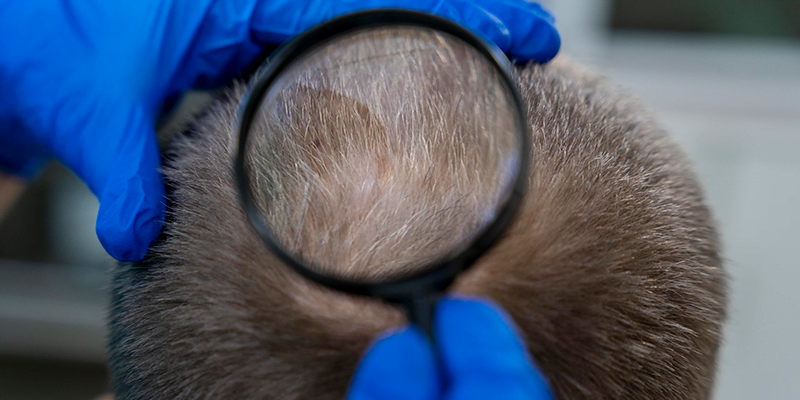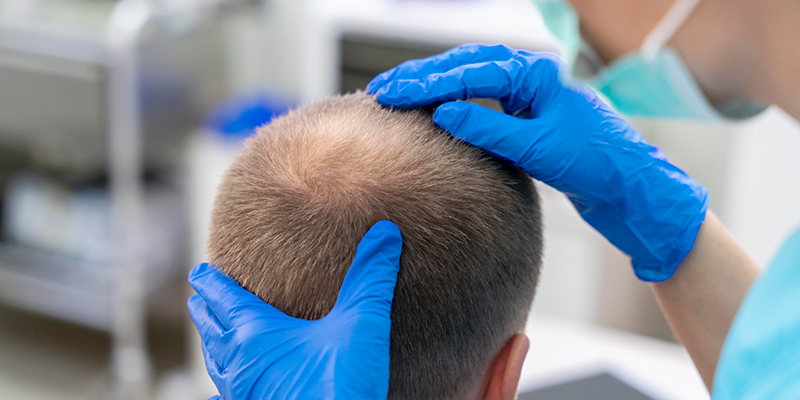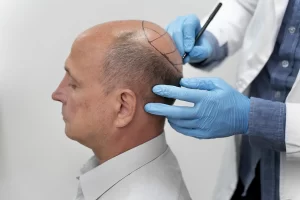Hair loss is a common concern affecting millions of people worldwide, driving a growing interest in hair transplant procedures. Among the various techniques available, FUE (Follicular Unit Extraction) and FUT (Follicular Unit Transplantation) stand out as the most popular and effective. Understanding the differences between these two methods is crucial for individuals considering a hair transplant to make an informed decision. This comprehensive guide, tailored for Lenus Clinic, explores the nuances of FUE vs FUT, helping you determine which technique might be the better option for your unique needs.

Understanding Hair Transplant Techniques
Hair transplants have come a long way since their inception, evolving into highly sophisticated procedures with impressive success rates. The primary goal of any hair transplant is to move hair from one part of the body, typically the back or sides of the scalp, to areas experiencing thinning or baldness. The two leading techniques, FUE and FUT, differ mainly in how the hair follicles are extracted.
What is FUE Hair Transplant?
FUE, or Follicular Unit Extraction, is a minimally invasive hair transplant technique that involves individually extracting hair follicles from the donor area and implanting them into the recipient area. This method is highly precise, using specialized tools to harvest single follicular units, which minimizes trauma to the scalp and reduces visible scarring.
What is FUT Hair Transplant?
FUT, or Follicular Unit Transplantation, also known as the strip method, involves removing a strip of scalp tissue from the donor area. This strip is then dissected into individual follicular units, which are implanted into the thinning or bald areas. While FUT can cover larger areas in a single session, it typically results in a linear scar where the strip was removed.
FUE vs FUT Techniques
To determine which hair transplant technique is better, it’s essential to compare various aspects of FUE and FUT. This section delves into the procedure details, pain and discomfort levels, recovery times, scarring, and overall effectiveness.
Procedure Details
In FUE, the surgeon extracts individual hair follicles using a micro-punch tool. This meticulous process can be time-consuming but allows for precise placement and natural-looking results. FUT, on the other hand, involves surgically removing a strip of scalp, which is then divided into follicular units. While FUT can be quicker for larger transplants, it requires more extensive surgical intervention.
Pain and Discomfort
Both FUE and FUT are performed under local anesthesia, minimizing pain during the procedure. However, post-operative discomfort varies. FUE patients typically experience less pain and a faster recovery due to the minimally invasive nature of the extraction. FUT patients might feel more discomfort and tightness in the donor area due to the strip removal.
Recovery Time
Recovery times for FUE are generally shorter, with most patients resuming normal activities within a few days. The small, dot-like scars heal quickly. In contrast, FUT requires a longer recovery period, often involving a few weeks for the linear scar to heal properly. This difference can be a deciding factor for individuals with busy lifestyles.

Scarring and Aesthetics
One of the significant advantages of FUE is the minimal scarring it leaves behind. The tiny puncture scars are virtually undetectable once healed. FUT, however, results in a noticeable linear scar, which can be a concern for those who prefer shorter hairstyles. The aesthetic outcomes of both techniques depend heavily on the surgeon’s skill and the patient’s healing process.
Effectiveness and Success Rates
Both FUE and FUT boast high success rates, with transplanted hair typically growing naturally and permanently. FUE’s precision allows for more detailed and customizable results, while FUT can cover larger areas in a single session. The effectiveness largely depends on individual circumstances, including hair type and extent of hair loss.
Cost Comparison
Cost is a significant consideration for many patients. Generally, FUE tends to be more expensive due to the time and skill required for individual follicle extraction. FUT can be more cost-effective, especially for larger transplants. It’s essential to weigh the financial investment against the desired outcome and potential benefits.
Ideal Candidates for FUE
FUE is ideal for patients who prefer a less invasive procedure with minimal scarring. It’s particularly suitable for those needing smaller transplants or those who wear their hair short. Individuals with tight scalps, which may complicate strip removal, also benefit from FUE.
Ideal Candidates for FUT
FUT is often recommended for patients requiring a significant number of grafts in a single session. It’s also suitable for those who don’t mind the linear scar, particularly if they wear their hair longer. Patients with extensive hair loss can benefit from the efficient coverage FUT provides.

FUE vs FUT for Different Hair Types
Hair type can influence the choice between FUE vs FUT. Curly or coarse hair may be easier to extract and transplant using FUE, while straight hair can benefit from the dense packing possible with FUT. Consulting with a specialist can help determine which technique aligns best with your hair type.
Please read:International Society of Hair Restoration Surgery: “FUE Vs. FUT and Maximizing the Hair Graft Harvest”
Long-term Results and Maintenance
Both FUE and FUT offer long-term, natural-looking results. The transplanted hair blends seamlessly with existing hair and requires no special maintenance beyond regular hair care routines. Periodic follow-ups with your surgeon can ensure the longevity and health of the transplanted hair.
Potential Risks and Complications
As with any surgical procedure, hair transplants carry potential risks. FUE’s minimally invasive nature reduces the likelihood of complications such as infection or scarring. FUT’s more extensive surgery increases these risks slightly, but both techniques are generally safe when performed by experienced professionals.
Choosing the Right Clinic
Selecting a reputable clinic is crucial for a successful hair transplant. Look for clinics with experienced surgeons, positive patient reviews, and a portfolio of successful transplants. A thorough consultation can help you assess the clinic’s suitability for your needs.
Curious about which hair transplant technique is right for you? Get a free consultation at Lenus Clinic to learn more.
Consultation Process
The consultation process is your opportunity to discuss your goals, ask questions, and evaluate the surgeon’s expertise. A good consultation includes a detailed assessment of your hair loss, a discussion of your medical history, and a personalized treatment plan.
Pre-Transplant Preparations
Preparing for a hair transplant involves several steps to ensure the best possible outcome. This may include avoiding certain medications, refraining from smoking, and following a healthy diet. Your surgeon will provide specific instructions tailored to your situation.
Post-Transplant Care
Proper post-transplant care is essential for optimal healing and results. This includes following the surgeon’s guidelines for washing your hair, avoiding strenuous activities, and attending follow-up appointments. Adhering to these instructions can significantly impact the success of your transplant.
Natural Appearance of Hair Growth
Both FUE and FUT aim to create a natural-looking hairline and density. The skill of the surgeon in placing the grafts and the quality of the donor hair play critical roles in achieving this. Over time, the transplanted hair will grow and blend with your existing hair, providing a seamless appearance.
Psychological Impact of Hair Transplants
Hair transplants can have a profound psychological impact, boosting self-esteem and confidence. Many patients report a renewed sense of well-being and an improved quality of life following the procedure. The decision to undergo a hair transplant can be life-changing, making it crucial to choose the right technique and clinic.
FAQs
What is the main difference between FUE and FUT? The primary difference lies in how hair follicles are extracted. FUE extracts individual follicles using a micro-punch, while FUT removes a strip of scalp, which is then dissected into follicular units.
Which method leaves less scarring? FUE leaves minimal, dot-like scars that are virtually undetectable. FUT results in a linear scar, which can be more noticeable.
Is one method more painful than the other? Both methods involve local anesthesia, minimizing pain during the procedure. However, FUE generally results in less post-operative discomfort compared to FUT.
How long does it take to recover from a hair transplant? Recovery time varies, but FUE typically allows for a quicker return to normal activities within a few days, while FUT may require a few weeks for the linear scar to heal.
Which method is more cost-effective? FUT can be more cost-effective for larger transplants due to the higher number of grafts obtained in a single session. FUE, being more time-intensive, tends to be more expensive.
Can both techniques provide natural-looking results? Yes, both FUE and FUT can provide natural-looking results when performed by skilled surgeons. The choice of technique depends on individual needs and circumstances.
Checkout: FAQs About Hair Transplantation
Conclusion
Choosing between FUE and FUT hair transplant techniques depends on various factors, including the extent of hair loss, budget, and personal preferences regarding scarring and recovery time. Both methods offer unique advantages and can provide natural-looking, long-term results. At Lenus Clinic, our experienced team is dedicated to helping you make the best choice for your hair restoration journey. By understanding the differences between FUE and FUT, you can confidently move forward with the procedure that best suits your needs and lifestyle.




No comment yet, add your voice below!